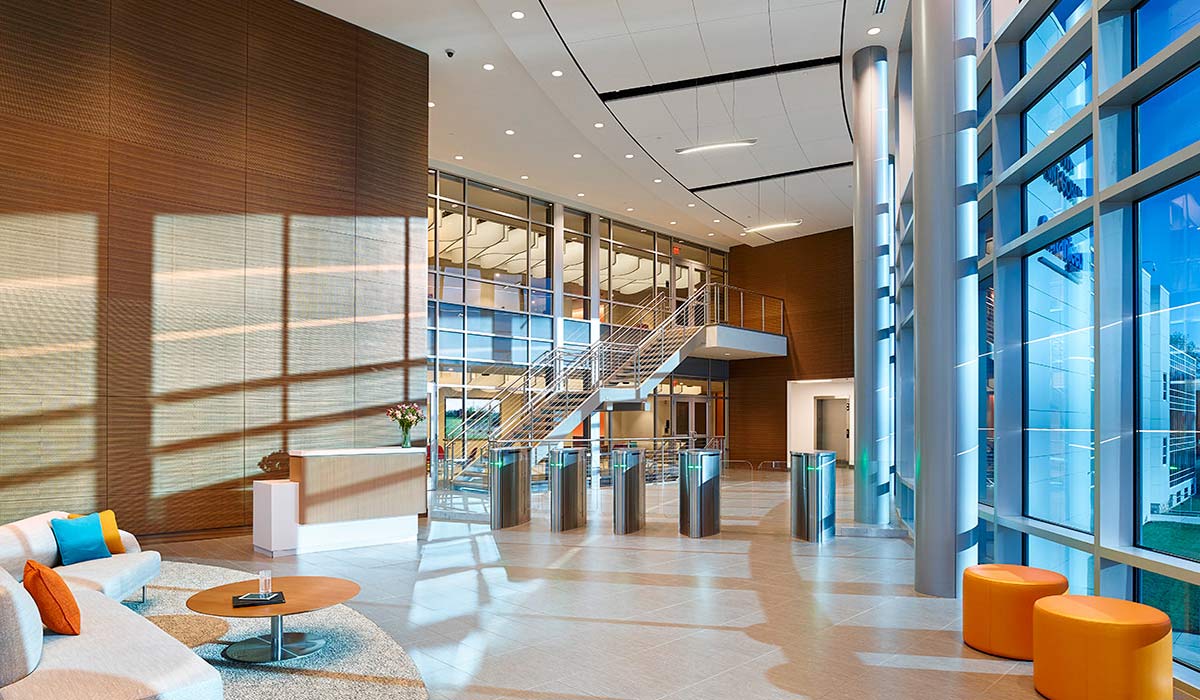
Cubicles and stale, windowless rooms, beware:
When a building is designed with the health of its occupants as a priority, it creates a world of difference, potentially increasing productivity by up to 140 percent.
The High Performance Environments Lab (HiPE), housed in the School of Architecture & Environment (SAE), and the sustainable building products company Saint-Gobain, recently released a pioneering study that shows how environmental factors like daylight, acoustics, access to the outdoors, and air quality significantly affect workplace comfort.
Professor of Architecture and Director of HiPE Ihab Elzeyadi worked with the Pennsylvania-based company to do a three-year occupancy study in a state-of-the-art office building—a 1960s one that had been renovated into a corporate headquarters with a LEED Platinum certification.
In addition to increased productivity, the study’s other major findings include a 53 percent increase in employee perception of improved health and well-being and a decrease of nearly 30 percent in “Sick Building Syndrome,” where occupants report complaints of dry eyes, back pain, and difficulty focusing.
Read more about the study in the GlobeSt.com story “Building Products Company Saint-Gobain Tests Occupant Comfort in New HQ.”
